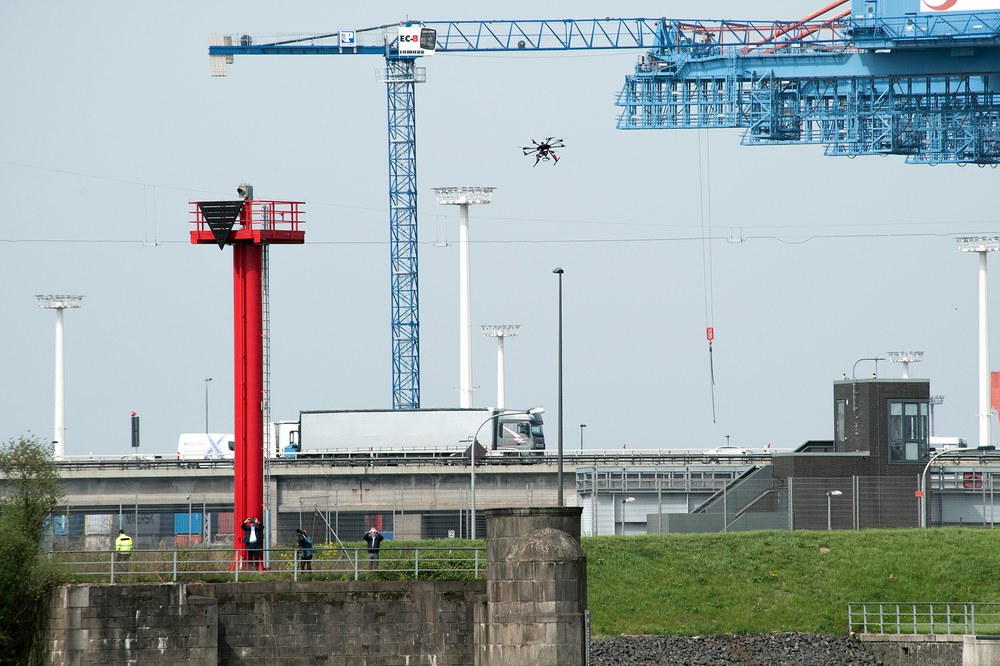NASA and DLR study the transformation of the air transport system


- New airspace users of different sizes, such as light aircraft, air taxis (urban air mobility), Unmanned Aerial Systems (UAS) and even supersonic aircraft, will create new transport possibilities and place additional demands on the current air traffic management system.
- Joint research for a future comprehensive airspace and traffic management system.
- Focus: Aeronautics, unmanned flight, urban air mobility
The integration of new types of aircraft into the air transport system requires it to change. Over the coming years, the US National Aeronautics and Space Administration (NASA) and the German Aerospace Center (Deutsches Zentrum für Luft- und Raumfahrt; DLR) will be working together on research into how the air transport system can be transformed to meet these new challenges. To this end, in 2020 the two institutions signed an agreement on close research collaboration.
One air transport system for everyone
In recent decades, the air transport system has coped well with the steady growth of conventional air traffic thanks to continuous advancements. In the future, however, new users such as light aircraft, air taxis (urban air mobility), Unmanned Aerial Systems (UAS) of different sizes and supersonic aircraft will add new transportation opportunities and put additional demands on the current air traffic management system. The air transport system is therefore facing a large number of completely new challenges, as these new types of aircraft bring with them additional tasks, technical capabilities and new missions.
"An air traffic mix of this kind raises a number of new questions about the way in which such aircraft will interact while in the air," says Dirk Kügler, Director of the DLR Institute of Flight Guidance. "Under this agreement NASA and DLR will jointly design the framework for a future air transport system that provides the operational versatility required by the new participants. Our new system should be scalable, flexible and resilient without compromising the safety of current or future aircraft."
For example, because of their special characteristics, agile air taxis will be able to navigate airspace in a different way than conventional aircraft. Their size and flight capabilities promise various benefits within urban environments, including the envisaged ability to bypass road traffic congestion. Operating such aircraft safely and efficiently without hampering existing air traffic is a demanding task that requires a large number of constraints to be taken into account.
As part of their collaborative efforts, German and US researchers will share information and compare the results of simulations, working towards the definition of a comprehensive, forward-looking airspace and traffic management system. Both parties will contribute to a deeper understanding of the challenges that a mixed air transport system presents, and will evaluate newly devised approaches for such a system. The aim of the collaboration and the joint endeavour is to develop innovative solutions as quickly as possible, in Europe and in the US, that will be able to handle the expected influx of new airspace users without impairing further growth in traditional air transport.
While NASA has been developing, integrating and validating a comprehensive UAS Traffic Management (UTM) system for drones in the US since 2015, a similar, transnational concept, U-space, also exists in Europe. Both concepts are geared towards the integration of new air traffic participants into existing airspace safely and efficiently. Mutual exchange of experience, strategy and technologies will enable both partners to shape the transformation of the air traffic system as effectively as possible.
Partners rely on successful preliminary work
As part of the collaboration, NASA will build upon the preparatory work from its Air Traffic Management – eXploration (ATM-X) project. ATM-X will leverage lessons learned from a service-oriented architecture for a UAS traffic management system developed by NASA's UTM project. Such an architecture envisages individual services for managing aircraft being supplied by users, service providers and authorities, that integrates seamlessly into an overall system. In cooperation with DLR, this paradigm is now being applied to all other airspace users.
For its part, DLR is primarily drawing upon its knowledge and experience from the ongoing City ATM project. Within this project, DLR has been working on the definition and validation of functional and technical strategies for the operation of drones in urban areas since 2018. Areas of particular focus include the provision of information, traffic control, and the development of infrastructure for communications, navigation and monitoring.
Established collaboration
The newly announced cooperation on new participants in air traffic continues the longstanding collaboration between NASA and DLR in this field. Since 2012, the NASA's Ames and Langley Research Centres and DLR's Institute of Flight Guidance in Braunschweig have worked together to integrate systems for the management of approaches, departures and taxiing.
